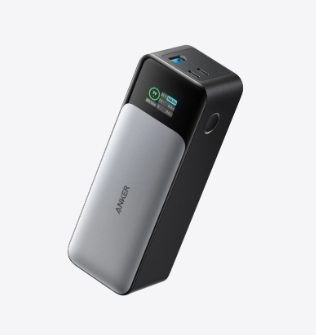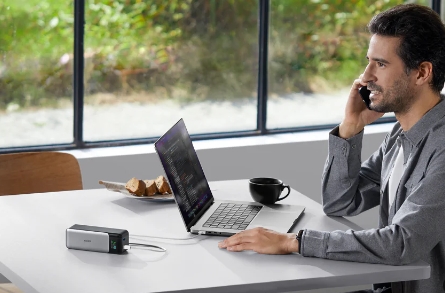Traveling frequently often means relying on electronic devices to stay connected, productive, and entertained. Whether you're catching up on work emails, streaming movies, or navigating a new city, a reliable power bank is a must-have accessory. However, not all power banks are created equal, especially when it comes to air travel. Choosing the right power bank involves understanding airline regulations, device compatibility, and safety features. In this article, we’ll guide you through the essential steps to select the best power bank for frequent flyers, ensuring you stay powered up without any hassle.

Step 1: Check Airline Regulations and Capacity Limits
Before purchasing a power bank, it’s crucial to understand the regulations set by airlines. Most airlines restrict power banks with a capacity exceeding 100 watt-hours (Wh) in carry-on luggage, while those between 100Wh and 160Wh may require prior approval. Power banks above 160Wh are generally prohibited. For example, if you’re carrying an Anker power bank with a 20,000mAh capacity and 5V output, its watt-hour rating would be 100Wh, making it compliant with most airline rules. Always check the specific regulations of your airline, especially for international flights, as rules can vary. Knowing these limits ensures your power bank on flight is both safe and approved.
Step 2: Choose the Right Capacity Based on Your Devices
High Capacity for Laptops and Tablets
If you frequently travel with power-hungry devices like laptops or tablets, a high-capacity power bank is essential. Look for models with at least 20,000mAh or higher, as these can provide multiple charges for larger devices. For instance, an Anker power bank with a 26,800mAh capacity can charge a MacBook Air up to 1.5 times or an iPad Pro multiple times. This is particularly useful for long-haul flights or work trips where access to power outlets may be limited. However, remember to stay within airline capacity limits to avoid issues during security checks.
Compact Models for Smartphones and Accessories
For travelers who primarily need to charge smartphones, earbuds, or smartwatches, a compact power bank with a lower capacity is more practical. Models with 5,000mAh to 10,000mAh are lightweight and easy to carry, making them ideal for short trips or daily commutes. For example, an Anker 10,000mAh power bank can fully charge an iPhone 14 up to two times, ensuring your phone stays powered throughout the day. These smaller power banks are also more likely to comply with airline regulations, making them a hassle-free choice for frequent flyers.
Step 3: Look for Fast Charging and Multiple Ports
USB-C Power Delivery for Fast Charging
Fast charging is a game-changer for travelers who are always on the go. Look for power banks with USB-C Power Delivery (PD) technology, which can charge compatible devices like laptops, tablets, and smartphones at significantly faster speeds. For example, an Anker power bank with USB-C PD can charge a MacBook Pro or a Google Pixel phone in a fraction of the time compared to standard chargers. This feature is especially useful during layovers or when you need a quick boost before an important meeting.
Multi-Device Compatibility with Multiple Ports
If you travel with multiple devices, a power bank with multiple ports is a must. Models with USB-A, USB-C, and even wireless charging capabilities allow you to charge your smartphone, tablet, and earbuds simultaneously. For instance, an Anker power bank with dual USB-C and USB-A ports can charge your laptop and phone at the same time, saving you valuable time. This versatility ensures that all your devices stay powered, no matter where your travels take you.
Step 4: Prioritize Safety and Certification
UL and CE Certification for Airline Safety
Safety should always be a top priority when choosing a power bank, especially for air travel. Look for models with certifications like UL (Underwriters Laboratories) and CE (Conformité Européenne), which indicate that the product has been tested for safety and compliance with international standards. For example, Anker power banks are known for their rigorous testing and adherence to these certifications, making them a reliable choice for travelers. These certifications also ensure that the power bank is less likely to overheat or malfunction during use.
Built-in Overheat and Overcharge Protection
A good power bank should have built-in safety features like overheat and overcharge protection. These features prevent the power bank from overheating or damaging your devices by automatically stopping the charging process when necessary. For instance, Anker power banks are equipped with advanced safety mechanisms that monitor temperature and voltage, ensuring safe and efficient charging. This is particularly important when using the power bank on flight, where changes in pressure and temperature can affect battery performance.
Step 5: Consider Portability and Design
Portability and design are key factors for frequent flyers. A power bank should be lightweight, compact, and easy to carry, especially if you’re already juggling multiple devices and luggage. Slim, pocket-sized designs are ideal for travelers who need to stay mobile. Additionally, consider features like a built-in cable or LED display, which can add convenience and functionality. For example, an Anker power bank with a built-in USB-C cable eliminates the need to carry extra cords, while an LED display shows the remaining battery percentage, helping you plan your charging needs. A well-designed power bank not only enhances usability but also complements your travel gear.

Conclusion
Choosing the right power bank can significantly enhance your travel experience by keeping your devices charged and ready for use. By understanding airline regulations, selecting the appropriate capacity, and prioritizing fast charging and safety features, you can find a power bank that meets your needs. Whether you’re a business traveler with a laptop or a casual flyer with a smartphone, the right power bank ensures you stay connected and productive. You are generally allowed to bring a portable charger on a plane as long as it complies with airline regulations, like the Anker 733 Power Bank and Anker 737 Power Bank, which are designed with travel-friendly features and safety certifications.
